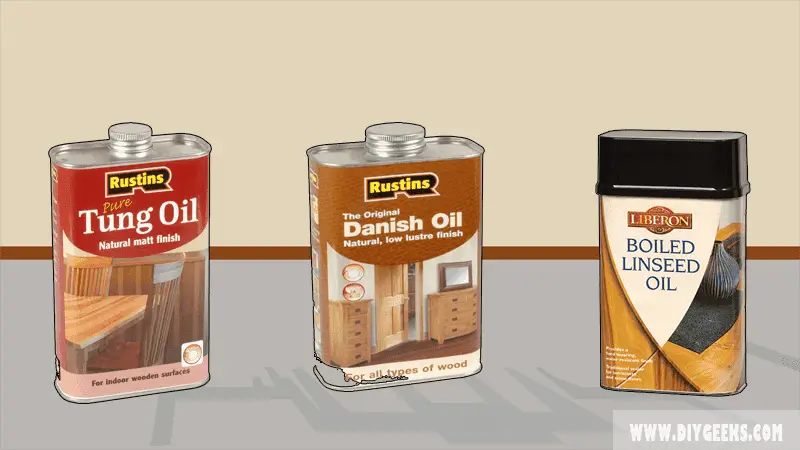Wood oils are a type of produce used to enhance and protect the wooden surface. They are designed to penetrate the wood grain (or pores) and adhere there.
Wood oils produce a glossy and reflective finish that protects wood from moisture, water, scratches, and other elements.
Common types of wood oils include the following.
- Danish Oil
- Teak Oil
- Linseed Oil
- Tung Oil
- Mineral Oil
What Are Wood Oils?
Wood oils are wood finishes that enhance the wood’s appearance and durability, and protect them from moisture, water, or scratches. They are designed to be applied over bare wood surfaces, penetrate and protect them.
Most wood oils can’t be applied over painted or sealed surfaces, have a thick coat viscosity, and have a long dry time.
1. Danish Oil
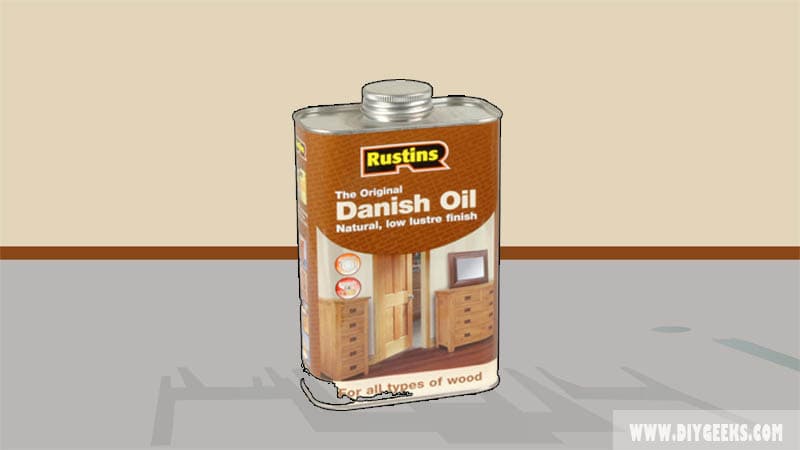
Danish oil is a type of wood oil made of drying oils, resins (varnish or polyurethane), a thinner and solvent. It penetrates the wood pores and creates a low-sheen or satin finish that creates a natural look.
The main advantages of Danish oil include fast drying time, water-resistant coating, flexible coating, and a non-yellowing finish. Danish oil takes around 4-6 hours to dry between coats.
The main Danish oil disadvantages include hard to apply, weak finish, and poor wood protection. It has a water-resistant coating, but it can’t withstand contestant water exposure.
You need between 2-4 Danish oil coats for proper coverage and protection. Danish oil must be applied over bare wood as it can’t penetrate the surface if it’s painted or sealed.
2. Teak Oil
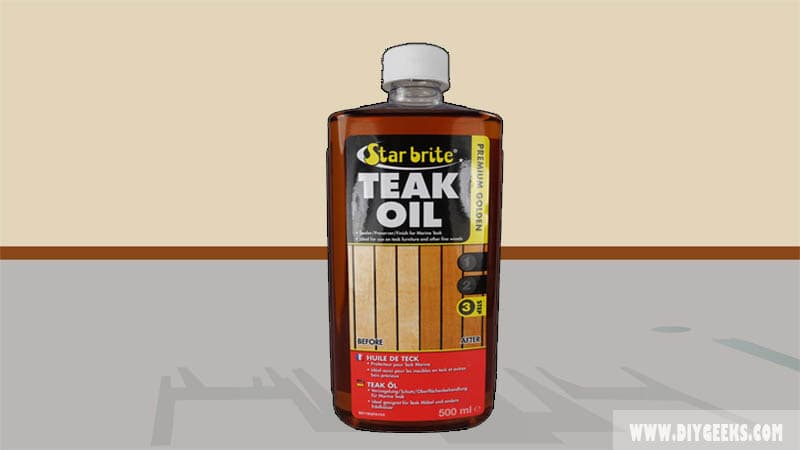
Teak oil is a wood finish specially formulated for Teak wood but can be applied to other wood types too. You can use Teak oil for outdoor surfaces as it protects them from water, moisture, scratches, and outdoor weather elements.
The teak oil formula consists of drying oils, resins (varnish or polyurethane), solvents or thinner (Mineral spirits), and additives (UV-blockers). The specific combination and ratio of these ingredients depends on the brand or manufacturer.
Teak oil produces a honey-like water-resistant finish that enhances the wood’s natural look and protects it
3. Linseed Oil
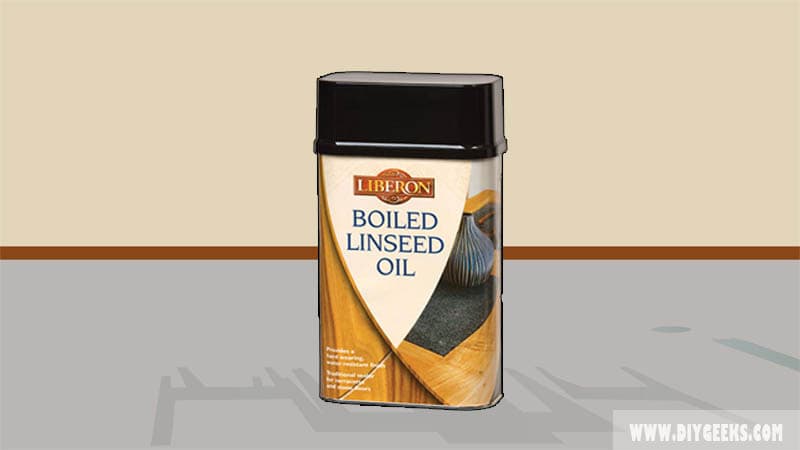
Boiled Linseed oil is a natural oil used as a wood finish and preservative. The wood oil penetrates the wood surface and creates a durable, water-resistant finish. It’s mainly used for indoor surfaces.
There are two types; raw Linseed oil and Boiled Linseed oil. Raw Linseed oil is a natural oil and doesn’t contain extra additives, Boiled linseed oil is formulated with extra additives and drying agents that help it dry faster.
The boiled linseed oil formula consists of linseed oil (extracted from flaxseeds), drying agents, resins, solvents or thinner, and additives.
Boiled Linseed oil takes around 24 hours to dry between coats, while Raw Linseed oil takes around 72 hours (3 days). You need between 2-4 Boiled Linseed oil coats for proper coverage, durability, and protection.
The main Linseed oil advantages include being easy to apply, it’s adaptive and you can combine it with other finishes, and hides scratches and imperfections properly.
The main Linseed oil disadvantages include that it turns yellow over time, it’s not ideal for outdoor surfaces, and it’s not waterproof.
4. Tung Oil
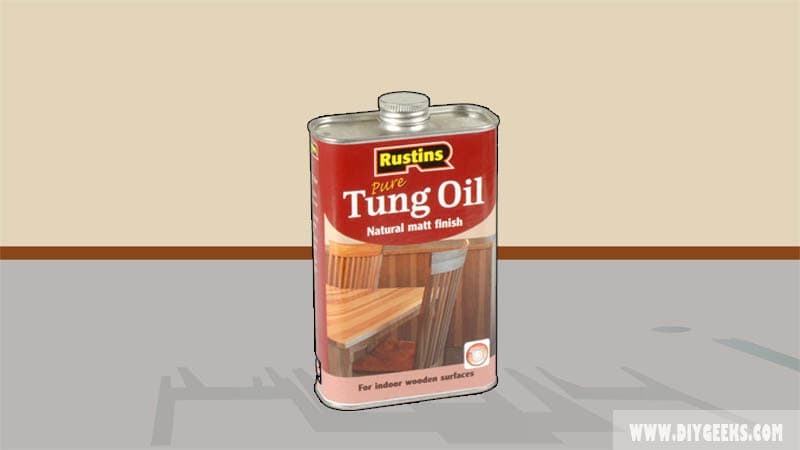
Tung oil (or China wood oil) is a natural drying oil obtained from tung tree (“Aleurites fordii or Vernicia fordii”) seeds. It’s used as a wood finish and preservative because it produces a water-resistant finish.
Tung oil is considered a drying agent as it oxidizes when exposed to oxygen, which leads to oil hardening. It’s mainly used for woodwork, furniture, and outdoor surfaces.
Tung oil takes around 24 hours to dry between coats and 3 days to cure (fully dry). You need between 2-6 Boiled Tung oil coats and 2 Raw Tung oil coats for proper coverage, durability, and protection.
The main Tung oil advantages include water-resistant coating, not yellow over time, and can be used indoors and outdoors. The main Tung oil disadvantages include its expensive price tag, and its difficulty to apply.
5. Mineral Oil
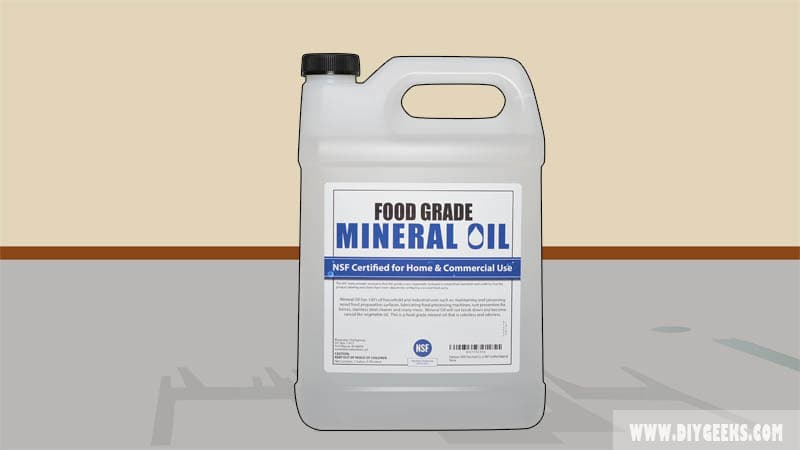
Mineral oil is a colorless and odorless petroleum-derived liquid used for cutting boards, kitchen utensils, and dining furniture.
The wood oil contains alkanes and cycloalkanes. It is also called White oil, Paraffin oil, and Liquid paraffin because the term “Mineral oil” is used to refer to several oil by-products of crude oil. You should check the label to ensure that the one you purchase is designed for finishing wood.
Mineral oil for wood often includes natural additives to make the finish more protective of the wood surface.
Pros:
- It is easy to apply and it dries quickly.
- When dry it fills the wood grain and enhances the natural color of the wood.
- It is a pure finish and also serves as a wood conditioner.
- Mineral oil doesn’t discolor wood.
Cons:
- It isn’t durable and doesn’t protect the wood from scratches and dents like other wood oil finishes.
- Mineral oil is restricted in its use. It can’t be used on outdoor furniture or floors.
- It wears off of the wood surface after a few weeks and would need to be reapplied to preserve its finish.
- It’s not waterproof.
